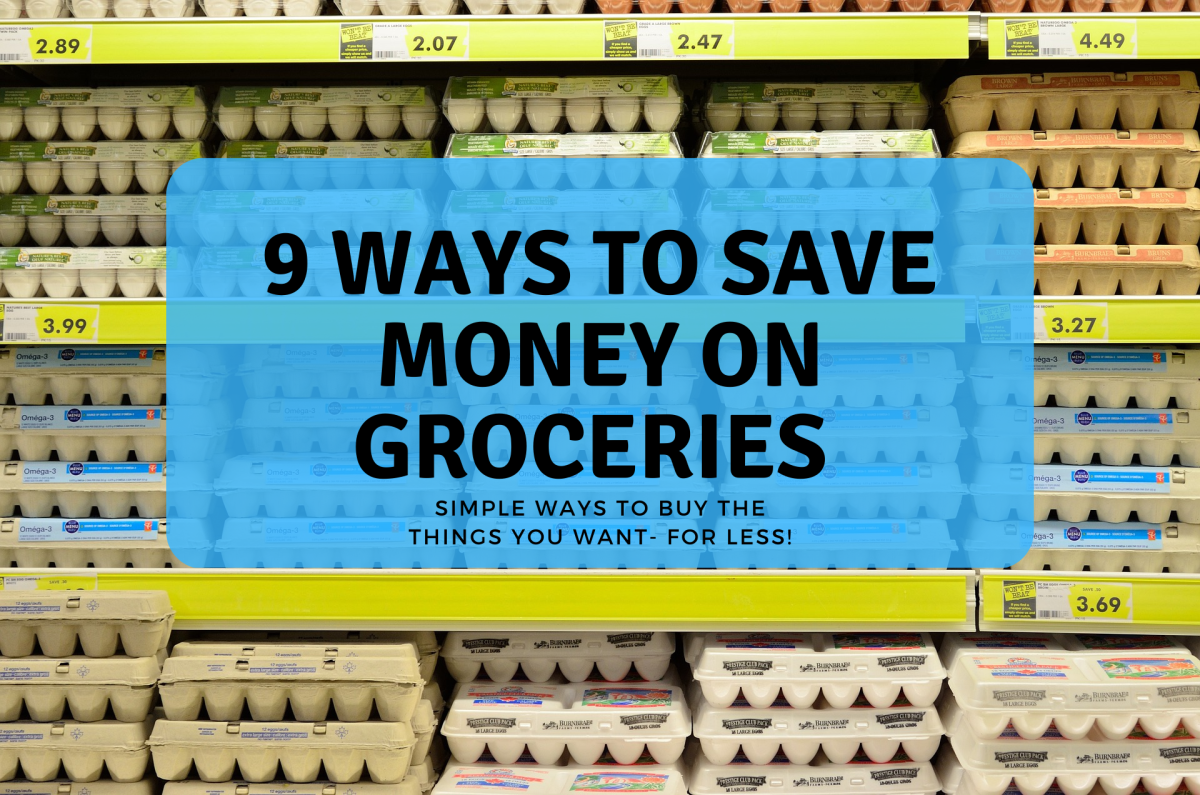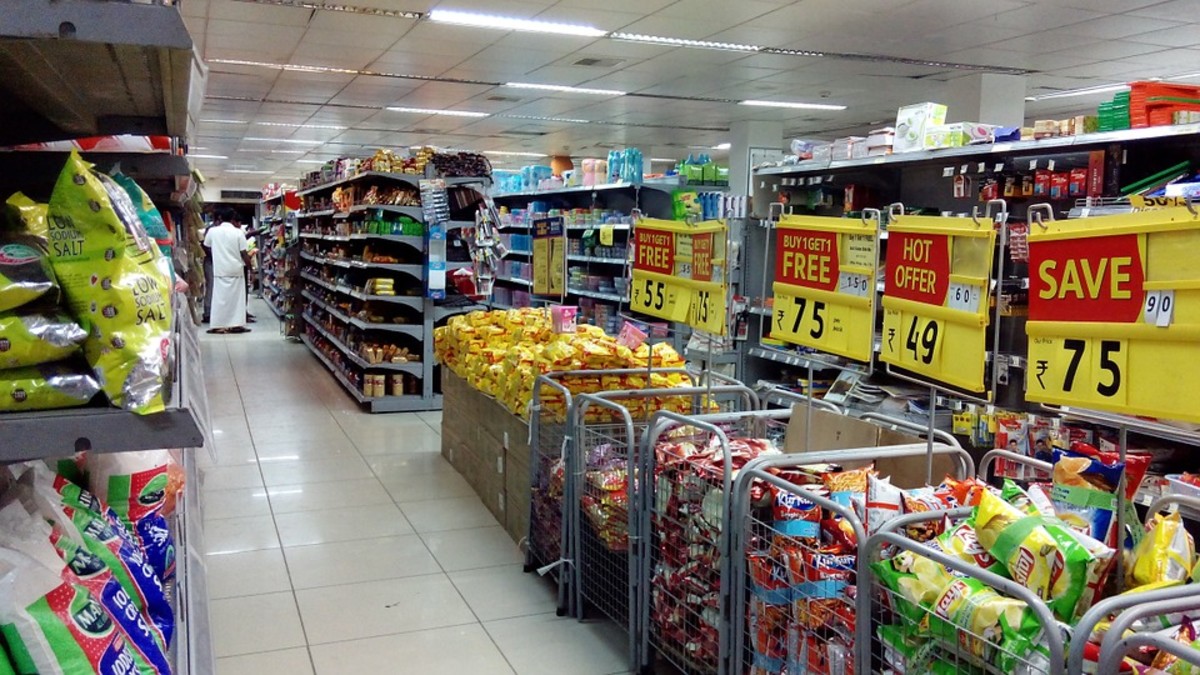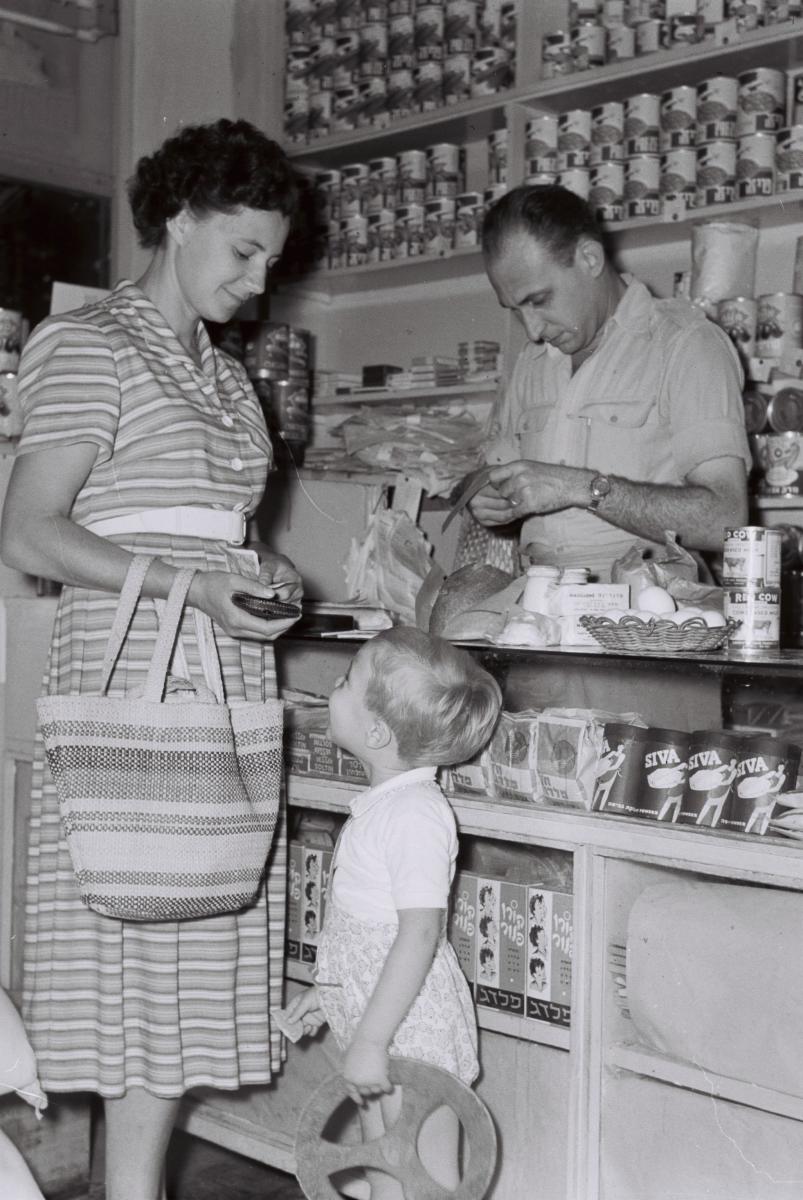Breaking Grocery Store Chains
When All That Was Needed Was Ten Acres and a Mule.

In the Beginning
I was gainfully employed and did not pay much attention to the money that left my account at grocery stores on a weekly basis until a couple of years ago. At the time, it was not uncommon for me to spend $400 or more a week on groceries. I will never get that money back. It was before the bottom fell out of the economy. I was injured catastrophically at work. Imagine my surprise when I found out that the Family Medical Leave Act (FMLA) had been changed to include three little words that would forever change my life and my family’s security.
The words that were added to the FMLA were short and simple. Most people never knew or noticed the change. It now says, “. . . or catastrophic injury.” If you think that those words will not affect you, don’t ever get catastrophically injured at work. If you do, and cannot return to full performance of your regular duties in 12 weeks, your employer may now fire you. Retirement? Tough luck. I was dropped like a hot potato. My spine had been broken in two places. Clearly, I could not return to work in 12 weeks. We were now relegated to living off of my husband’s investigator salary. We were in danger of losing our home, horses, dogs, and other pets. My daughter was young and at an impressionable age. I had to find something that I could do to help.
I had to reduce the money that I was accustomed to spending, fast! Everywhere that I looked, I was being told that I had to spend money to properly care for my family. I am increasingly amazed at how susceptible we all are to marketing. The belief systems that we have about food are the result of clever marketing campaigns. Those who absorb themselves in conspiracy theories in government, should in actuality be more concerned with the power that marketing executives are using to control societal norms. Recently watching a television show, one of the narrators found some mushrooms growing in a tree. He asked another narrator if he knew if that type of mushroom was poisonous. The first replied that they were indeed poisonous. The second asked how he knew that they were poisonous. The first replied that they were not in a grocery store. Amusing if you don't consider it a sad commentary about marketing control in America.
If the local grocery store was demolished tomorrow, most people would starve. They don’t know where or how to obtain food without one. I propose that not only should people educate themselves about what they are buying; they should also educate themselves on what is done to the food that they purchase to make them buy it. It was not that long ago that I was also ignorant about the frauds that marketing and grocery corporations enact upon us. It was only after I was forced to take a long hard look at my spending practices that I asked myself why I felt that I needed a particular item. Most of the time, the answer was because I had fallen for some marketing program. It was time to change. I looked to history and the wisdom of ancestors to help me make that change. This is some of what I learned from that research.
Using History to Save Money Today
It was obvious that the grocery budget needed to be cut drastically. I thought it was impossible, but I knew that it had to be done. I watched TV reality shows on couponing. I organized, spent hours cutting coupons, and purchased processed foods whose marketing plans included coupons. It wasn’t long before I realized that I had a house full of food that no one liked and that was not at all healthy. Again, I had wasted the family money at the grocery store. My guilt was increasing. My great grandparents had made it on very little money. How had they done it? My great grandpa Sutton had raised ten children in a little house on a hill in London, Kentucky. (Below is a modern picture of that house where my grandmother was raised.)
I am nothing if not dogged and organized. I began to track my spending and document what items my family liked. Yogurt was the top of the list. Greek yogurt of course. Only the most expensive for my family. After doing the math, I realized that I could cut about a quarter of the grocery budget by simply making the yogurt myself. I was sure that I could do it. Women have been using cultures to make yogurt in Bedouin tents in the desert for heavens sake. I remembered my mother purchasing a yogurt machine when I was in high school in the late 1970’s. It had six little cups and was a pain to use, but after all, what else did I have to do.
I began to search for a yogurt machine that would work for my family. I settled on one through Amazon Marketplace called Yogourmet. It makes a half gallon of yogurt in about eight hours for pennies. I bought it. I then bought an extra internal container. I learned that although, Greek yogurt is a form of strained yogurt to make it thick, I could make it at home easier. All that is required is to add a cup of powdered milk to the milk in the container. before culturing it. The product comes out as thick as Greek with no additional effort. Making it this way has the added benefit of almost doubling the calcium and protein in the finished yogurt. Also, I discovered that it had been those tiny little cups of the 1970 something machine that had made it so useless. With the larger capacity model, it made the effort worthwhile. I could now make yogurt one evening a week and have plenty of yogurt for my family. It would last almost a full week before it was all eaten. Personally, I make vanilla yogurt. If anyone wants fruit on the bottom, they can put preserves in the bottom of their bowl before they put in the yogurt.
I discovered that it was easy, healthier, and contained no preservatives or artificial colors. I began to notice an improvement in the overall health and appearance of my family and my budget in the first week. My next trip to the grocery store was around $200. My husband said that we needed to get it down to $100 a week. I was sure that it was an impossible task, but was determined to do my best. My next objective was to minimize the cost of the jam and preserves that had now become an integral part of the yogurt experience in my house. I pulled out my old Better Homes and Gardens Cook Book. Yes the red checked book that every girl got as a wedding present, or on the day that they moved out of the family home in the south.

Reduce Waste and Save Money
Sure enough, right there, just as I had remembered seeing it was a chapter on home canning. I remember my mother preaching to me about how dangerous home canning was and that we were lucky to have grocery stores now. I was terrified! I thought that I was about to kill my family and probably most of my friends. That was, until I researched it. I learned that some of the old pressure canners had been pretty dangerous. They did not have safety pressure relief valves and had been known to explode without much warning. Modern pressure canners have safety valves. Also, since we now know how long to process food in order to kill bacteria, the risk of harmful bacteria is minimal. Equal or less than the risk incurred when using commercially canned food. I discovered that since I controlled all of the environmental conditions when I canned at home, I could ensure that the food that I fed my family was safer and cleaner than that of a large commercial cannery. Hmmmm. I wonder who terrified Americans about canning their own healthy home processed foods so that they would spend their money at grocery stores. Conspiracy theorists focus here!
My next realization was that I had been a sucker. I started small with a boiling water canning project that did not require the purchase of an actual canner. It was so easy that I was ashamed. Better yet, the product tasted so much fresher that the family was hooked. The next time that I went to the grocery store, I was about ten dollars down from the previous week. Also, since canning jars are reusable there were lots of other benefits to home canning. My family was reducing their carbon footprint on the world. Speaking of garbage, it was about that time that I discovered that there was a neighborhood dump less than a mile from my subdivision. Wow, another unnecessary expense was eliminated. Why pay a garbage man when I could drop it off at the dump on my way just about anywhere?
Saving money was becoming a game to me. The extreme couponing thing, not so much. I realized that I had bought a lot of food that I would not normally have purchased and that was going bad when no one ate it. I promptly donated all of it to a food bank and started with only the food that I knew my family would consume. I still use coupons, but I specifically target only the ones that I know my family uses and likes. I looked at the next largest money monster on my list: meat.
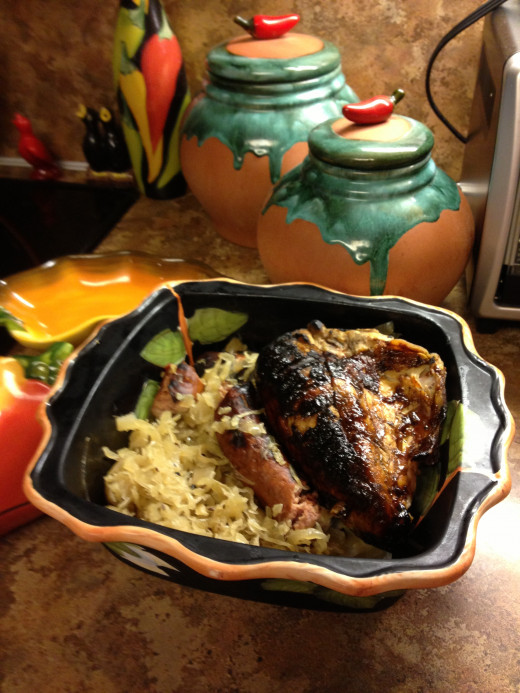
Reducing the Budget Without Reducing the Meat
I have a family of carnivores. We like meat and we eat a lot of it. I would carefully plan what I was going to make and then go to the grocery store to purchase the necessary ingredients. I was careful to check for any applicable coupons online but not to get sucked into purchasing something just because I had a coupon for it. Then one day, as I headed up to the supermarket register with a frozen chicken, I glanced down at the sale on turkeys. I was about to pay $13 for a six pound chicken and I was suddenly staring at a 20 pound turkey for about the same price. I may not be a genius, but even I could do that math. I put the chicken back and bought the turkey. It fed my family for a week rather than just one meal for the same amount of money. I soon realized that if I bought the sale meat, I would be reducing my grocery bill significantly. I made a rule: Pay no more than two dollars a pound for meat.
I started with turkey and hams. Off season, they are easy to pick up for around a dollar a pound. Then I discovered that frequently I could also get chicken breasts even the boneless skinless kind for less than two dollars a pound. The freezer began to fill. I began to plan meals around what I had in the freezer that I had gotten on sale. Before I knew it, I had my grocery budget down to $100.00 a week. I was on a roll.
I bought a pressure canner so that I could can my own soups and chili and not have so much food wasted. It was easy and came with explicit directions. I began to take the bones and peels that we did not eat and put them in a crock pot until the bones turned to mush. I added in some rice and canned my own dog food. My dogs began to look healthier. I could balance the nutrition and eliminate all the bad stuff for them. We passed our first winter with few illnesses.
With the options of canning or freezing, I found my state farmers market. I remembered my grandmother going to the farmers market once a week to get fruit and vegetables. After a few visits, I had discovered which venders wanted to bargain and which ones simply cut a few cents off grocery store prices and expected one to pay it. When the venders discovered that I would buy a case at a time, I got even better prices. I got a case of large premium Gala apples for $20 one week. My husband wanted to know what I was going to do with almost 50 pounds of apples. I made cinnamon apple filling and applesauce for a year and canned it. It is common to get a watermelon for one or two dollars. Strawberries for two dollars for the large containers. Of course, there was a learning curve, but my grocery budget had again shrunk.
I discovered that wild game could be purchased at hunters processors for around two dollars a pound. This intrigued me. I had recently learned that grocery stores spray painted the meat red to make it more marketable. Real meat is usually brown people. I was disgusted. At the processors that hunters use, it is possible to see the conditions and know how clean the property is. They do not paint the meat. Hunters often drop off game that they do not pick up. This game can be purchased at a fraction of the cost from the processor so that they do not lose money. Fresher meat cannot be purchased at a grocery store. I did not have to learn to hunt! Fantastic. I currently like to keep three deer in the freezer at the end of the hunting season for the coming year. I use ground venison as a substitute for ground beef. It did not take long to discover that meat with flavor was preferable to meat that was processed in unclean conditions then spray painted and left sitting around in display cases. Another expense had just been reduced. There was an added benefit of the meat being totally organic. You can bet that wild animals are not out there injecting themselves with hormones and antibiotics.
While I was investigating how food was handled in grocery stores, I learned that “fresh eggs” could be more than a month old and still called fresh. (Also, these eggs that were mass produced from hens stuck in tiny cages were lacking in color and consistency from the beginning.) It is difficult to determine the exact age of a grocery store egg. Some reports including a 20/20 episode show eggs being washed and repackaged when they are over 30 days on the shelf of the grocery store. On top of everything, they were not live fertilized eggs. Dead eggs rot. Rotten eggs are not healthy and contain bacteria. Did you ever wonder why people used to be able to put a raw egg in their beer or in their health shake? They were live eggs that is why. Live, fertilized eggs can safely be kept on your counter top for 21 days without going bad. Try that with a grocery store egg and see what you get! My solution was to get a flock of chickens for my back yard.
Having a back yard flock can be loads of fun. I have Aracauna chickens. They lay blue and green eggs. Sometimes, like now, I even have a hen who lays pink eggs. I have a couple of brown layers for conformity. See the picture below of some of my eggs with a boiled egg custard made from them next to it. No additional food coloring was necessary to make the custard yellow. The eggs did the job that they were supposed to do in that regard.
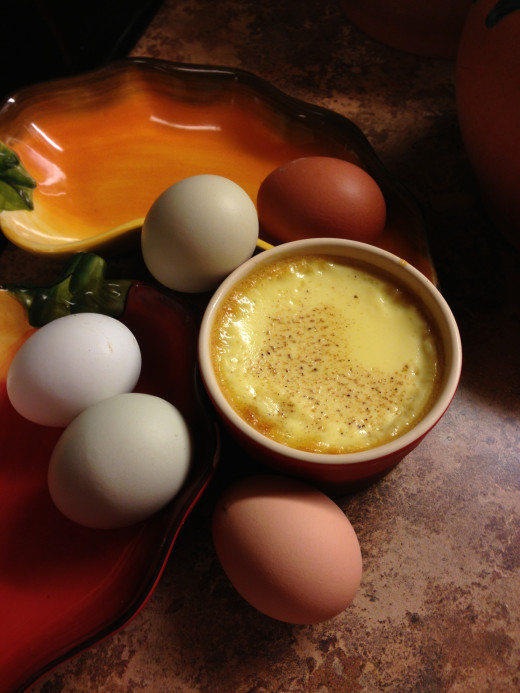
Fresh Eggs
My chickens live a free life running around in my privacy fenced 1/4 acre back yard in a suburb of Atlanta. The eat bugs and scraps from the kitchen as well as a cup or two of chicken food. They weed my garden and fertilize my yard. They are only locked up at night for their safety in the coop. I found out that even the eggs at the grocery store that claimed to be cage free only meant that the chickens were in huge barns all crowded together walking in droppings usually, with only one rooster to hundreds of hens. Guess what? I don’t care how macho that rooster thinks he is, he cannot fertilize all those eggs all alone.
I was concerned about my neighbors and about county ordinances. What I discovered was that in my suburban county, as long as my coop was 100 feet from the property line, I could have a back yard flock.My first home laid eggs were scary. They had bright orange yolks and did not melt all over the frying pan. They stayed in firm little ovals while they cooked unless I intentionally spread the whites out. The flavor was different too. They were delicious. I just cut another item off my grocery list. I still haven’t butchered one for meat, but pets with benefits work for me.
Success
These days, when I leave a grocery store, I have rarely spent more than $50 for the entire week. That money is spent on flour, sugar, spices, milk and cereal. I have successfully managed to skim more than $1400.00 a month off of my family grocery expense budget with less planning and almost no couponing. The food that we eat is fresher and more nutritious. I cook the weekday meals on one day of the weekend. I make my own yogurt and butter on that day as well. The rest of the week, I do freelance work and manage my schedule around picking up my daughter from school and taking care of her. Eliminating daycare costs removed another $500 a week from our budget. My increased awareness of how I spend money has rubbed off on my daughter. She will often see something she likes at the store, look at the price and tell me that she doesn't want it that much. She is appreciating the fact that educating ourselves about how marketers influence us can help us fight those urges. The bonus monthly savings from eliminating child care, garbage, and a few other things that I will write about in other articles has resulted in an additional monthly savings to my family of about $2000.00 a month. I am trying to learn to grow a vegetable garden and hope to get a pygmy nanny goat for milk. I have learned that my value to my family is worth more in time than it would have been if I had been able to return to work. If you have done the math, you have realized that I am saving my family approximately $3,400.00 a month. That means that my yearly savings is $40,000.00 a year. A few thousand more than I was earning when working and I don't have to pay tax on it. Now I morn the days that I missed with my only child when she was small and I was working for someone else. It is important to pass along the lessons that I have learned. The lessons that our grandparents knew. Two and some children can live as cheaply as one. It just takes a little team work. I am free of the grocery store chains fake promises and my family is more secure. I don't fear not being able to get to a grocery store. I generally have at least one year's supply of food on hand.
© 2014 eisutton


